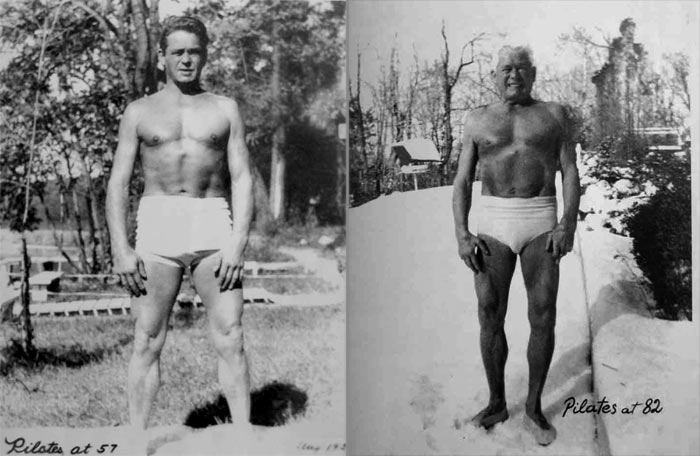Joseph Hubertus Pilates was born near Düsseldorf, Germany in 1880. As a child he suffered from asthma, rickets and rheumatic fever. Due to his health problems, he worked hard at improving his own fitness and at body-building. By the age of 14 his muscles were so clearly defined, that he was posing for anatomy charts.
He had a keen interest in yoga, karate, Zen meditation and the exercise regimes of the ancient Greeks and Romans. He worked as a boxer, a circus performer and a self-defence instructor.
During World War 1 he was interned as an enemy alien. He encouraged soldiers to participate in his conditioning programme based on a series of exercises performed on the mat. Towards the end of the war he was transferred to the Isle of man where he helped soldiers in their rehabilitation after injury. This is where he began experimenting with springs on the beds of those soldiers who were bedridden. He realised that doing exercise with resistance helped patients recover muscle tone more quickly. Joseph had no formal training in physical therapy but looked at elements of various activities to develop a system of exercise that became his trademark. His work with war veterans including those with injuries and even loss of limbs resulted in him gaining knowledge of rehabilitation from first-hand experience and results. From self-defence to circus training J Pilates was by no means conventional in his approach to physical fitness.
Nowadays we really heavily on medical research but in those days there was very little information for Pilates to draw on, so much of his work was discovered through trial and error and he was way ahead of his time in the way he prescribed his exercises. He worked very much on an individual basis in the sense that he would vary the exercises according the specific needs and body type of the client.
After the war he returned to Germany where he continued working on his methods and developing his equipment. At around this time he met Rudolph Laban, the creator of Labanotation, the most well-known form of dance notation. This introduced him to the dance world.
In 1926 Pilates moved to America and, along with his wife, Clara, opened and ran a studio in New York. He worked with dancers who were injured and managed to get them back to the stage so quickly that he gained an excellent reputation within the dance world and was highly recommended by both Martha Graham and George Balanchine.
Pilates as a form of exercise and rehabilitation has long been associated with dancers. By the time he died in 1967, at the grand old age of 87, a number of studios based on his method had opened. Pilates taught his assistants by apprenticeship.
